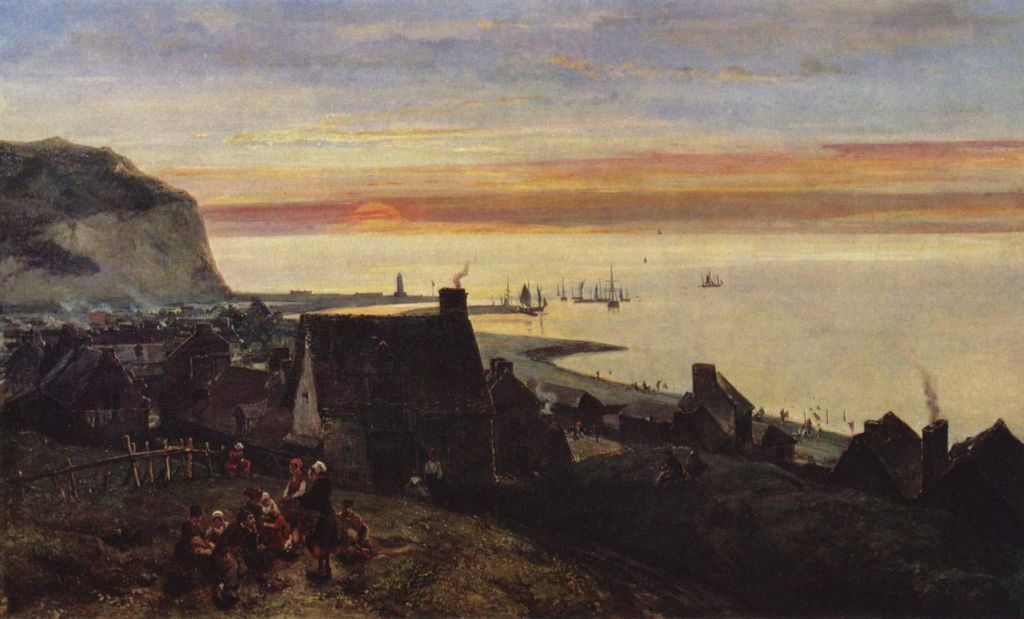In this alphabet of landscape painting, the letter s stands for seaside, the coast that became so popular as a theme during the nineteenth century. It also stands for series, as I’ll explain below.
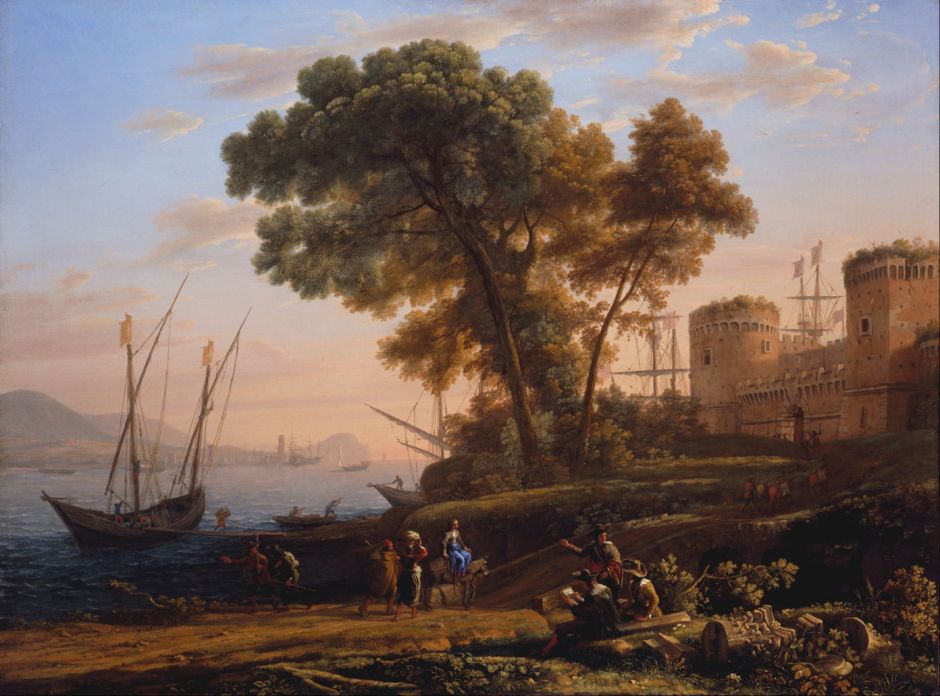
During the 1630s, Claude established his reputation as one of the two greatest landscape painters of the period, alongside his compatriot in Rome, Nicolas Poussin. They both painted idealised landscapes, composites of passages from different physical locations, based on extensive plein air studies, a practice that Claude showed in An Artist Studying from Nature (1639). Here is an imaginary harbour dominated by a large tree and a fortified building, bathed in the glowing light of dusk. The building resembles the Castle of Palo, a fortified structure on the Mediterranean coast to the west of Rome. Claude made several drawings at this castle, just as the artist in the lower right-hand corner of this painting is doing.
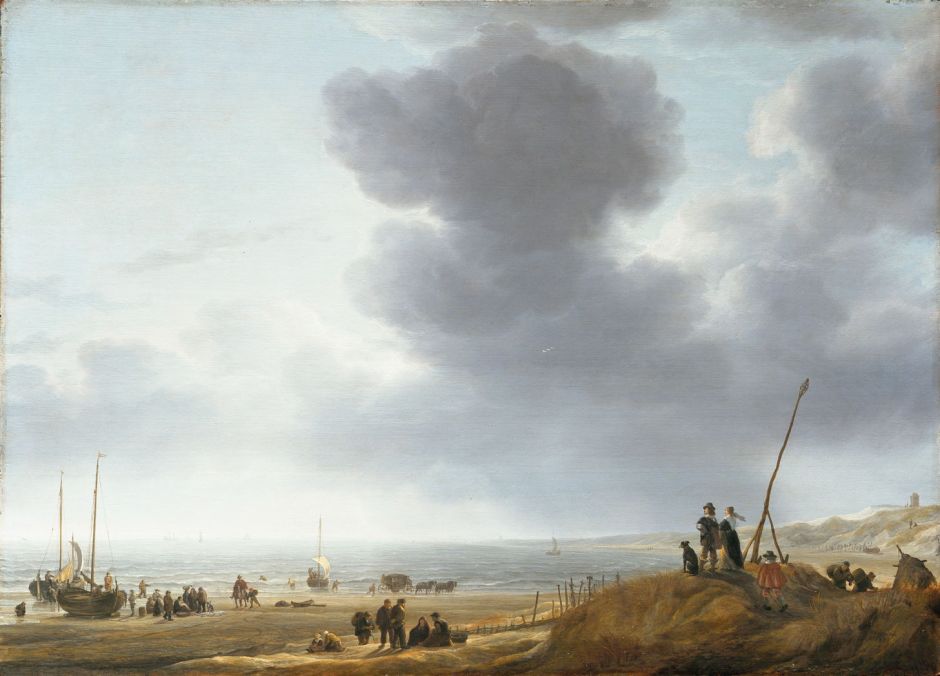
At about the same time, landscape painters of the Dutch Golden Age were also discovering the coast. Simon de Vlieger’s Beach View from 1643 uses boats, many figures, and careful composition to swell the land over the bottom of its panel.

Jacob van Ruisdael’s The Shore at Egmond-aan-Zee (c 1675) was painted to the west of Alkmaar, in North Holland, and couples devices similar to those of de Vlieger’s Beach View above, with its rougher weather.
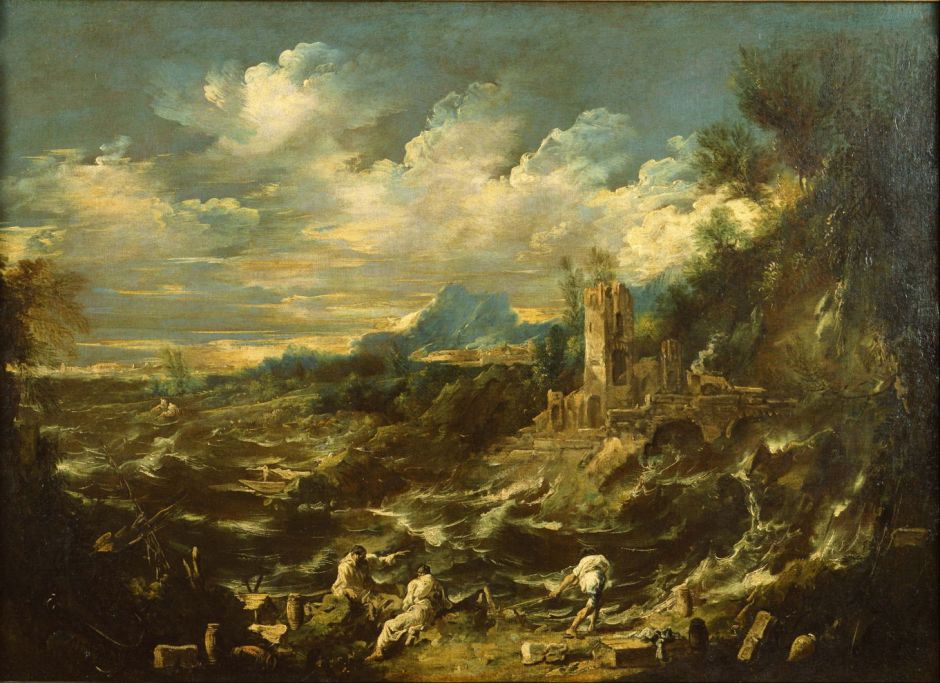
By the early eighteenth century, landscape artists were starting to paint views of the coast during storms, such as Alessandro Magnasco’s Landscape with Stormy Sea, painted between 1718-25. Born and resident in Genoa, he would have been very familiar with the storms of the Mediterranean, and their short, steep seas, just as shown here.
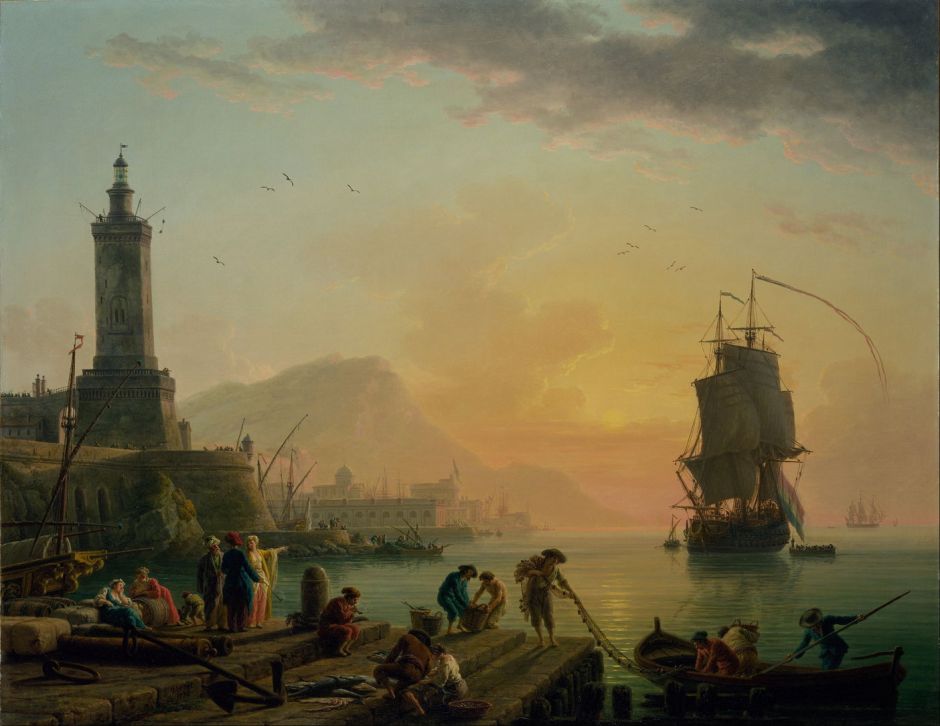
Later that century, Claude-Joseph Vernet followed with a series showing an idealised Mediterranean port at various times of day and weather conditions, including his Calm at a Mediterranean Port (1770).

Vernet’s coastal landscapes in turn inspired Caspar David Friedrich’s earlier coastal nocturnes, including this meticulously detailed view of Greifswald in Moonlight from 1817.
Developments continued in the warmer climate of the Mediterranean.
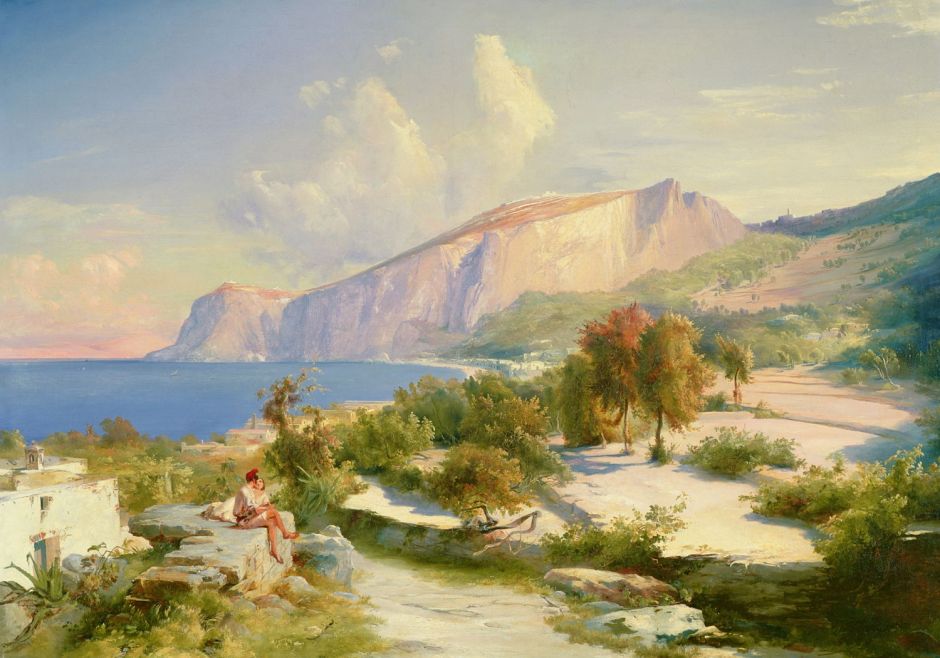
Carl Blechen visited the island of Capri in 1828, made hundreds of sketches there, and developed some into finished paintings when he was back in his Berlin studio, where he painted Marina Grande, Capri in 1829. This shows the north coast of the island, looking from the west of the Marina Grande to the east, with the Tiberius Rocks and Monte Tiberio in the distance, and I think that may be Vesuvius in the far distance.
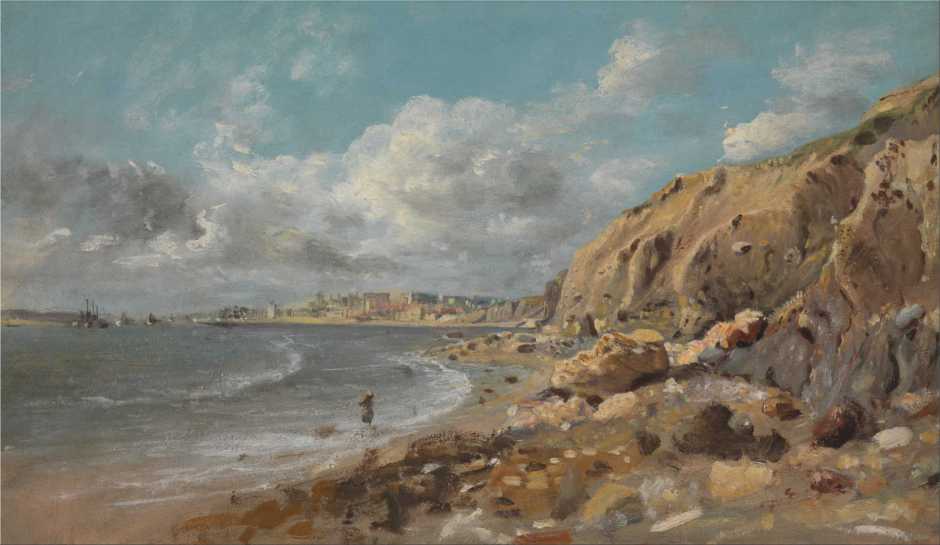
Little fishing villages in harsher climates, like Cullercoats on the north-east coast of England, became popular with painters like John Linnell, here in this Coast Scene at Cullercoats near Whitley Bay from about 1834, and almost fifty years later with the American visitor Winslow Homer.
In the middle of the nineteenth century, the massive chalk cliff at Étretat on the north coast of France became the cradle of Impressionism.

Although it’s fairly close to Le Havre, the first pre-Impressionist artist who appears to have painted Étretat wasn’t Boudin, but Johan Jongkind, who visited it in 1852. This is his marvellous view of Étretat Harbour, painted that year with the rich colours of sunset.
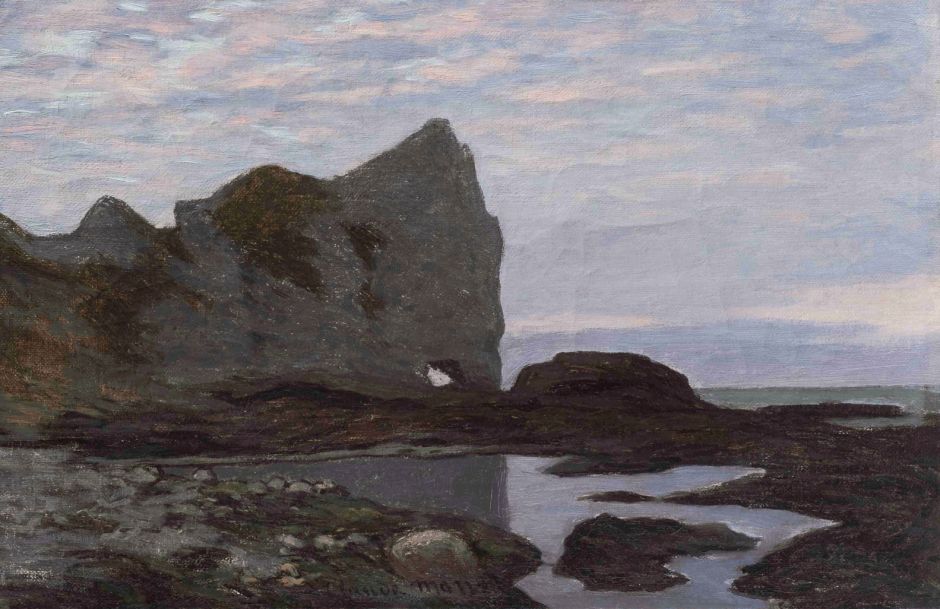
The young Claude Monet first painted there in 1864, in this view of Étretat showing the headland nearest the village and its distinctive Manneporte. He doesn’t appear to have painted here again until the 1880s, by which time he had started to paint series of the same motif in different light and conditions. In 1885-6, he completed a loose branched series; one of its four branches consists of six canvases (Wildenstein catalogue numbers W1014, W1014a, W1015, W1015a, W1044, and W1045), but the other branches are smaller in number, making a total of 13 paintings of the same motif.

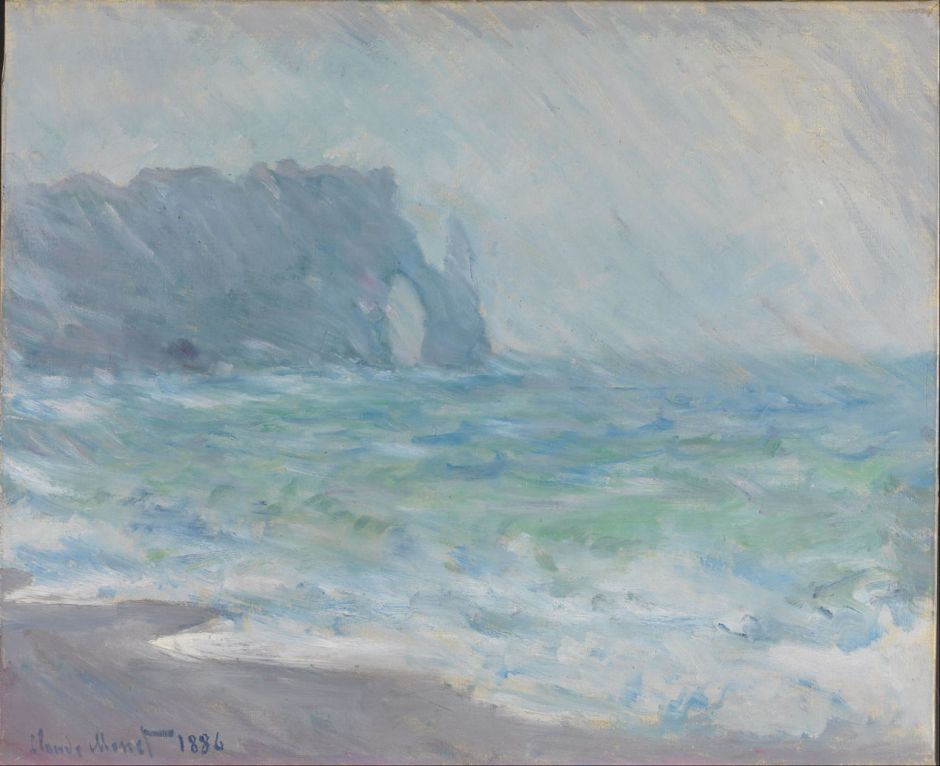
This is his Rain at Étretat from 1886, a companion to those above.
That year Guy de Maupassant described Monet’s unusual technique: “The artist walked along the beach, followed by children carrying five or six canvases representing the same subject at different times of the day and with different effects. He took them up and put them aside by turns according to changes in the sky and shadows.” Following that, Monet took the canvases back to his studio, where he adjusted and refined them, using exactly the same methods he’s thought to have used for his Grainstacks series five years later.
While Impressionism was born and brought up in northern France, Post-Impressionism travelled by train to the Mediterranean coast, with its favourable climate and distinctive light.
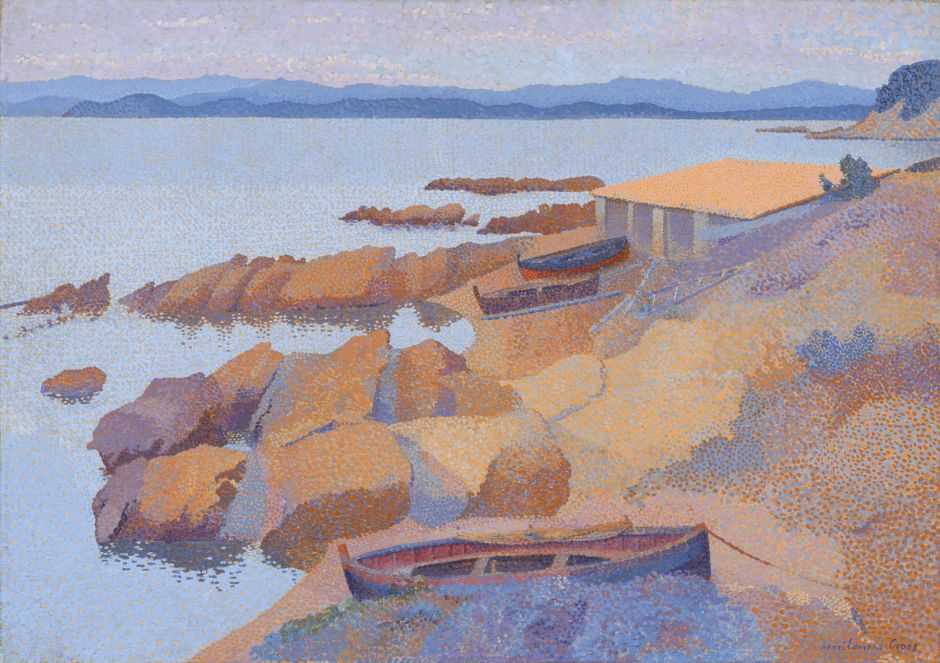
During 1891-92, Henri-Edmond Cross spent his first period in the Midi, where he painted this view of the Coast near Antibes. These were the months after the sudden and unexpected death of the leader of Divisionism and Neo-Impressionism, Georges Seurat.

By the end of the First World War, Théo van Rysselberghe’s colours had become as strong as those of the Fauves. In his Almond Trees in Blossom (Morning) the more delicate pinks of the flowers pale in comparison with his full reds and blues, including the blue horse pulling a plough on the Mediterranean coast.

